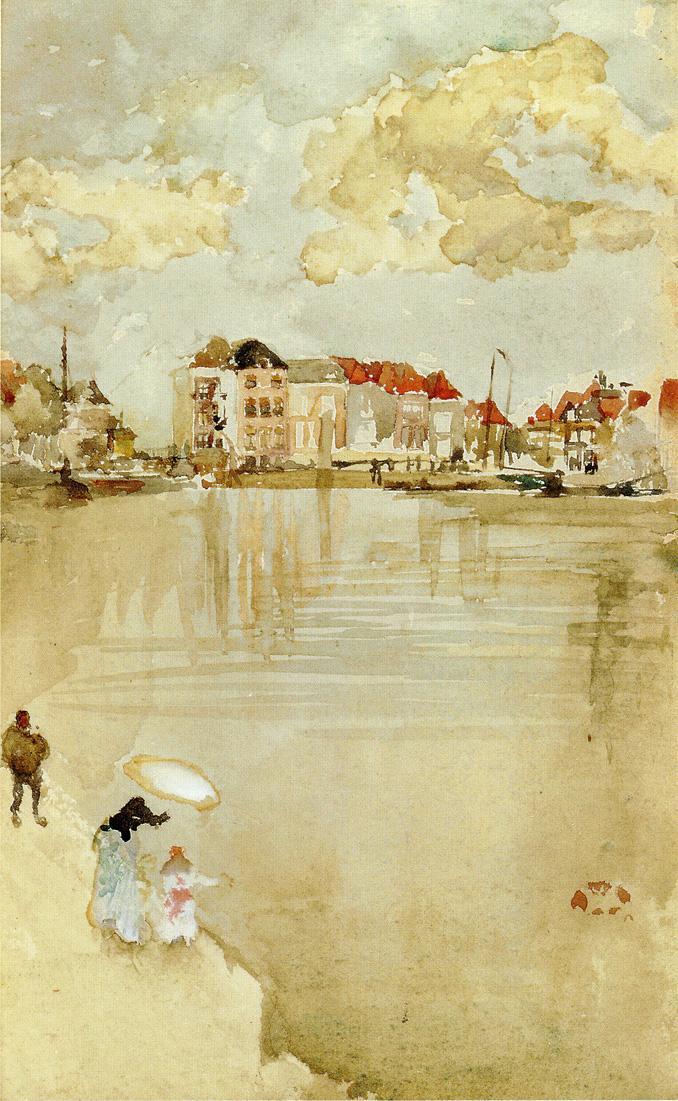James McNeil Whistler was an American born artist of Scottish-Irish ancestry. As a child, Whistler spent time in St. Petersburg with his father who was a civil engineer. He returned to the United States to attend Military School but he would later abandon this to pursue the arts instead.
Similarly to other artists of the time, James McNeil Whistler was fascinated with Paris and adopted a Bohemian lifestyle. He appreciated the French modern movement and realism and was inspired by painters he knew like Gustave Courbet, Henri Fantin-Latour and Francois Bonvin. Whistler’s work exemplifies realism and he was also drawn to the Pre-Raphaelite movement, which had begun in England in 1848.
Whistler moved between England and Paris and we can see his love for the sea through his oil studies and watercolours. He later painted the River Thames when he lived in London and exhibited his work in Paris which caught the attention of Charles Baudelaire.
Whistler received a lot of praise for his painting Symphony in White, No. 1: The White Girl (1862) which was shown at the Salon des Refuses in 1863.

I am not entirely sure how I feel about this painting. I find it interesting how Whistler went for a minimal colour palette and like the way he added subtle patterns to the white backdrop. However, I think that the model looks stiff and find the juxtaposition between the white dress and fur carpet unsettling and uncomfortable to look at. The tone is also a bit dull but I do enjoy the attention to the fabric and folds.

I like the painting above, Milly Finch, for its expressive brush strokes and bold colours. I like the pose of the woman because she appears to be more content and relaxed and this feels more natural than the typical poses found in other paintings at the time. I like how certain parts are more detailed for emphasis while the rest is left unfinished. We can also see the influence Japanese art had on this piece; for example, the style of dress, the fan, and oriental patterns on the couch.

Apart from paintings, Whistler also did etchings and works in watercolour as seen above. I like the way he handles the medium.
In his later years, Whistler felt as though his work did not keep up with modern movements. When impression became the style of choice for many artists, Whistler still focused on painting small studies of towns and seascapes as well as painting from nature. His etchings and lithographs also weren’t very popular as he only produced a few in colour which were popular at the time. Overall, his work was quite successful and he was a well respected artist of the 19th century.
Works Cited:
Leave a Reply